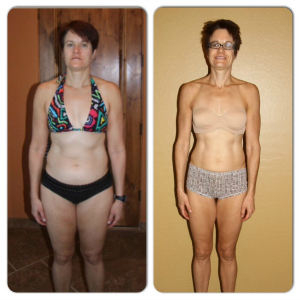
by | Nov 11, 2014 | Building Muscle, Consistency, Fat Loss / Cutting, Metabolism Reset, Testimonials
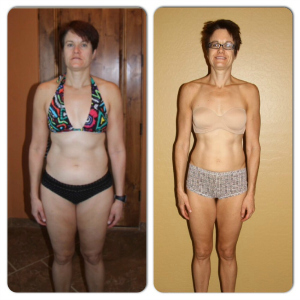 Kiki has been bugging me for a while now to write about my weight loss and fitness journey, so here I am finally getting the courage up to writing it. I say courage because in the past year I have come to realize quite a few things about myself that I was ashamed about for a long time and have finally come to be able to face the truth. Yes, I too (as many women do), suffer from binge eating disorder (BED), but let me start at the beginning of my journey, because I couldn’t always admit, or understood that this was going on.
Kiki has been bugging me for a while now to write about my weight loss and fitness journey, so here I am finally getting the courage up to writing it. I say courage because in the past year I have come to realize quite a few things about myself that I was ashamed about for a long time and have finally come to be able to face the truth. Yes, I too (as many women do), suffer from binge eating disorder (BED), but let me start at the beginning of my journey, because I couldn’t always admit, or understood that this was going on.
Upon turning 40 (4.5 years ago), I was very unhappy with my body and weight and the fact that hiking was getting hard for me. I live in Arizona and hiking is one of my husband and my passions, especially at the Grand Canyon. Well, it was a trip to the canyon that finally snapped me into reality and made me make the decision to do something about my weight that had ballooned to 185. I am 5’7” and 195 was the highest weight that I had gotten to in the past, so I was closing in on that number again! I decided to give online weight watchers a try and had (what I thought) was great success, after all I dropped 45 pounds in about 4 months! Of course, I quickly hit a plateau and continued to increase my exercise, while sticking to the very low “points” that weight watchers was allowing me; rarely to never eating back my exercise calories that continued to increase with my cardio/calorie burn obsession!
 After about a year of weight watchers, I decided not to renew my contract and to switch over to MFP, where I discovered that there was a whole group of Cathe Friedrich obsessed women out there. For those of you unfamiliar with Cathe, she is a workout DVD genius and my guru! I had been lifting weights with her DVD’s along with her cardio DVD’s during the whole weight watchers process. It was a breath of fresh air to meet all of these women with the same workout commitment that I had. Well, long story short, I got hooked up with Kiki through other mutual Cathe/MFP ladies and started to read her blog posts and watched her YouTube videos. This is where I first got hooked up with EM2WL and started to realize that the health industry has steered us women in the wrong direction when it comes to “losing” weight.
After about a year of weight watchers, I decided not to renew my contract and to switch over to MFP, where I discovered that there was a whole group of Cathe Friedrich obsessed women out there. For those of you unfamiliar with Cathe, she is a workout DVD genius and my guru! I had been lifting weights with her DVD’s along with her cardio DVD’s during the whole weight watchers process. It was a breath of fresh air to meet all of these women with the same workout commitment that I had. Well, long story short, I got hooked up with Kiki through other mutual Cathe/MFP ladies and started to read her blog posts and watched her YouTube videos. This is where I first got hooked up with EM2WL and started to realize that the health industry has steered us women in the wrong direction when it comes to “losing” weight.
After many conversations with Kiki, I was convinced and finally understood that eating really low restricted calories was always going to set someone up for failure, especially when it comes to losing weight and keeping it off and that the healthiest route was to eat to fuel your body and to lift weights, heavy weights! As I mentioned, I had been lifting weights all this time, but never understood why I was never able to make any progress in muscle development and that I had actually lost much of my muscle. Oh, and I should mention that during this plateau, I didn’t understand why every time I would feel like I made some progress I would fall into a binge tailspin. For 9 months, it was 2 steps forward and 1 huge binge step back. Every time this would happen I would absolutely loath myself and shame myself etc, but never understanding that it was partly my body’s way of telling me to “feed me”! (Of course there are also psychological reasons for the binging as well).
I finally let her convince me to do a metabolism reset after being at the plateau for a good 9-12 months and losing and gaining the same 5#. Silly me, I thought that I would reset my metabolism for 6 weeks and then start cutting again. I didn’t understand why after that 6 weeks I had gained a good 10# back and why when I started cutting it didn’t just fall right off!? After more conversations with Kiki and more research, she finally got me to understand that it wasn’t a number that I could assign to my reset, that it could and would take time, quite possibly a LONG time. She also convinced me to join a group of ladies who were starting STS (a 3-6 month Cathe weight lifting program), while bulking (eating above calorie requirement). She did warn me that I would gain weight and boy did I. I gained about 20# back, bringing me back to around 160. I was a little scared, as was my husband starting this process but new it was going to be for my good. After STS was finished I decided to try a cut. I lost some of that weight, but I could tell that my metabolism still wasn’t healed, so I started to eat at what I thought was maintenance and stayed there for a long time.
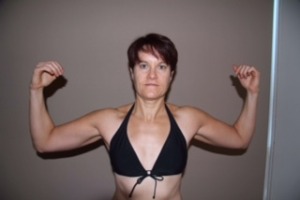 I should mention, that after I lost all the weight with weight watchers, I told my husband that I thought I wanted to someday compete in a figure competition. I had an unwritten goal of competing before I was 45. Well, I talked about this goal for about 4 years and finally, a (very devout Christian) friend of mine finally pointed out that maybe the fact that I kept bringing this topic up every few months, that maybe, just maybe God was directing me to actually go for my goal. I should mention that within all this time of weight loss and resets, I was born again (which is why she felt it was God calling me to this goal, for whatever reason). We both figured the reason was not because he wanted me to compete, but one much more deeply.
I should mention, that after I lost all the weight with weight watchers, I told my husband that I thought I wanted to someday compete in a figure competition. I had an unwritten goal of competing before I was 45. Well, I talked about this goal for about 4 years and finally, a (very devout Christian) friend of mine finally pointed out that maybe the fact that I kept bringing this topic up every few months, that maybe, just maybe God was directing me to actually go for my goal. I should mention that within all this time of weight loss and resets, I was born again (which is why she felt it was God calling me to this goal, for whatever reason). We both figured the reason was not because he wanted me to compete, but one much more deeply.
This conversation occurred in December of 2013 and around the same time, my husband got fed up with my talk and said that I needed to just do it! After much discussion with him and other women who had competed and a TON of prayer, God led me to an online trainer who came highly recommended and who was also a Christian. I signed a yearlong contract that began on January 27 2014 that included a nutrition and training plan, with the intention of competing on November 1, 2014. You are probably wondering how did it go!? It didn’t.
After starting with my trainer, I quickly started seeing results, not only in fat loss, but overall improvement in my cardio ability as well as muscle development. I couldn’t and still can’t believe the amount of muscle that I have been able to develop. So why did I not compete? As I said, I felt God had me on this journey for a much bigger reason than simply competing and as it turned out, it has been a journey of healing and learning about nutrition and coming to a place where I can finally admit that I do suffer from BED. Do I still struggle with BED? Constantly! Have I binged during this new goal phase of my life? Sadly yes, but with God’s help I am working on it and have only had 2 major occurrences in the last 9 months, which is a great improvement from binging every few weeks.
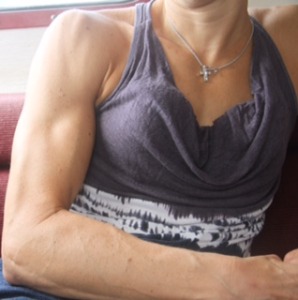 So, the reason I didn’t compete? Twelve weeks out from the competition date, when true contest prep would normally take place, I got a response from my trainer that I was not expecting. She felt that with my BED issues, that she could not get me to competition readiness without restricting my calories too much and with my ED, she knew it was the wrong thing to do. After much discussion with my husband, we both agreed that this is why I hired her and I should heed her advice.
So, the reason I didn’t compete? Twelve weeks out from the competition date, when true contest prep would normally take place, I got a response from my trainer that I was not expecting. She felt that with my BED issues, that she could not get me to competition readiness without restricting my calories too much and with my ED, she knew it was the wrong thing to do. After much discussion with my husband, we both agreed that this is why I hired her and I should heed her advice.
We have now moved into a muscle building phase and the new goal is to compete in spring of 2015 and if I am still not ready, than winter 2015. Needless to say, I now know this is a journey of not only physical health, but mental and spiritual as well and I will take as long as I need to get to the point of competing. My mindset has changed from “I just want to be able to say that I did it”, to “I did it and I won!”
I guess I should add my stats for those of you who are wondering (I started tracking in July of 2012 and unfortunately don’t have pictures for the earlier dates):
July 2012: 158 (end of my second reset)
September 2012 (the start of STS and after a short cut): 152
March 2013 (end of my first official bulk): 164
June 2013 (end of my first cut): 150
December 2013 (during my second bulk): 154
January 27, 2014 (the start of my figure training) 25% bf and 154.5
August 11, 2014 (12 weeks out from competition) 18.8% bf and 134
October 27, 2014 (last check in with my trainer) 17.7% bf and 132
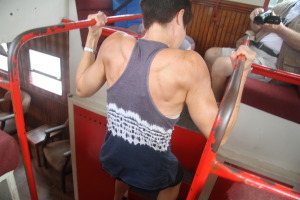
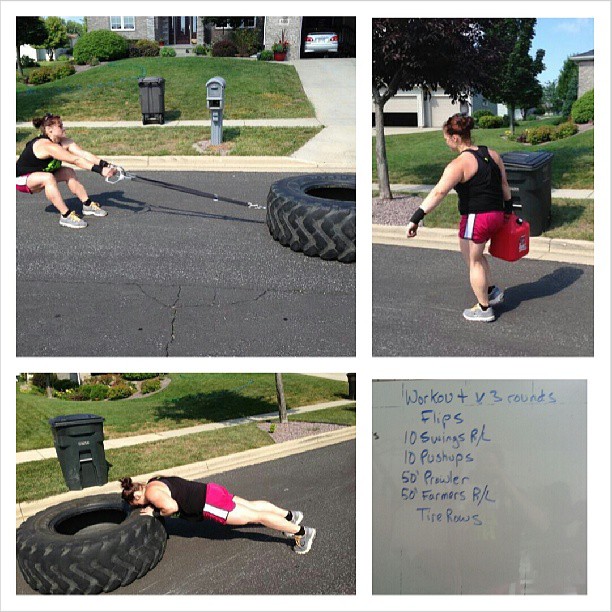
by | Oct 29, 2014 | Building Muscle, Cardio, Fat Loss / Cutting, Motivation, Nutrition
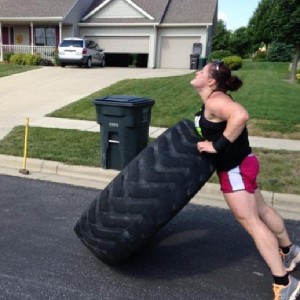 With the ever-increasing popularity of intense workout programs like CrossFit, metabolic conditioning, or metabolic resistance training (MRT) seems to be a fitness trend that’s here to stay.
With the ever-increasing popularity of intense workout programs like CrossFit, metabolic conditioning, or metabolic resistance training (MRT) seems to be a fitness trend that’s here to stay.
These workouts tend to be intense, impressive, and very cool-looking. Typically, they have the added benefit of giving you a goal to work towards (beat the clock!). Who doesn’t want to flip a big heavy tire, beat things with hammers, and carry around heavy weighted objects as fast as possible?
If you’ve done your part, by the end of the workout, you’re exhausted, sweating from head to toe, and sprawled out on the ground, hoping someone will bring you a protein shake (or maybe a gallon of Ben and Jerry’s…).
Obviously you’ve just had a great strength training workout, right?
Not necessarily.
What is Metabolic Resistance Training?
It can be confusing to understand exactly what this term means since this term is thrown around pretty haphazardly in the fitness world. It is not just a bunch of random exercises done as quickly as possible.
Simply put, Metabolic Resistance Training is a form of metabolic conditioning. The purpose of metabolic conditioning is to increase the efficiency of one of the three pathways used in exercise metabolism. Metabolic conditioning has the added benefit of conditioning the muscles to better use to fuel delivered to them. Ultimately, this should result in a better capacity to burn fat.

I do love pushing vehicles as a supplement to my serious strength training workouts!
Metabolic conditioning can be a great tool if your goal is fat loss. Not only does metabolic conditioning burn tons of calories during a workout, it also increases caloric burn in the 24-48 hours after your workout. This is due to excessive post-exercise oxygen consumption (EPOC). There are various different types of work to rest periods intended to increase EPOC.
A few examples are:
Tabata: 20 seconds of hard work, followed by 10 seconds of rest for 8 total rounds
30 On/30 Off: 30 seconds of hard work, followed by 30 seconds of rest for 6 total rounds
Circuits: Perform 3-6 exercises in a row with minimal to no rest between sets. These exercises should follow a logical pattern and should include elements of pushing, pulling, squatting, hinging, and carrying objects.
Energy Systems – The Goal of MRT
The primary goal of metabolic conditioning is to increase the efficiency of one of three metabolic pathways used in energy metabolism.
Creatine Phosphate Pathway: Also referred to as the Immediate Pathway, this energy system is responsible for providing short (less than 10 seconds) bursts of energy. This is the energy pathway utilized when performing quick power exercises like Olympic or powerlifting-style lifts or sprinting. It takes this energy system about three to five minutes to recover to its fullest potential.
Glycolytic Pathway: Also referred to as the Intermediate Pathway, this energy system provides the energy required for short, intense activities lasting one to four minutes. If you are completing high-intensity cardio intervals or doing multiple reps of a particular exercise, this is the pathway being utilized. It takes this energy system about 1-3 minutes to fully recover.
Aerobic Pathway: Also referred to as the Long-Duration Pathway, this metabolic pathway provides the energy required for longer-duration exercises of moderate-intensity work. This energy system can provide energy for hours of activity, since it has a limitless reserve (fat) to draw upon.
The energy system being conditioned by these workouts is largely determined on the rest period between sets. When structuring a metabolic resistance training circuit, it is important to keep the end goal in mind! The goal is NOT to throw weights around as fast as possible! These workouts should be well structured in order to maximize results.
It is important to remember that regardless of the activity performed, there is always some crossover between energy systems.

Metabolic conditioning is a fun way to get some cardio in, but nothing beats strength!
Is MRT the Same as Strength Training?
MRT typically involves weighted objects such as tires, battle ropes, farmer’s walks, sandbags, and kettlebells. These weighted objects are lifted in rapid succession, and the intensity is kept very high.
However, it is important to remember that the main goal of these workouts is not to maximize strength and to build muscle. The main goal of these workouts is to better utilize energy stored in the body. The primary goal of these workouts is more maintaining strength levels than gaining strength and adding muscle mass.
It’s key to remember that metabolic conditioning is not meant to be a haphazard, random bunch of exercises thrown together with the goal of burning a bazillion calories. These types of workouts are an advanced technique. So advanced in fact, that they are what many elite athletes turn to when they have reached their potential and are simply trying to maintain their current level of fitness. For the average recreational exerciser, it is important to complete these workouts under the supervision of a skilled trainer or strength coach.
The bottom line? You should view MRT workouts as a highly effective form of cardio, along the same lines as HIIT, meant to burn fat. These workouts are not intended to replace conventional strength training.
Is MRT right for you?
MRT can be a fantastic tool in your fat loss arsenal, provided that all other key elements are on pointe.
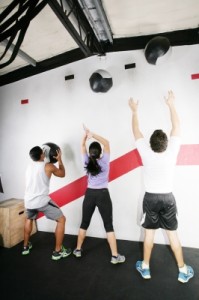 Alwyn Cosgrove, author of the best-selling series New Rules of Lifting, who has a great reputation for results-driven fitness, has come up with a Hierarchy of Fat Loss that can serve as a great checklist to go through when evaluating whether and how new training philosophies will help you reach your goals. You should think about approaching the following elements in order. As long as you are achieving the results you desire, even if progress is slow, there is no reason to add elements further down the list. Stay patient and trust the process!
Alwyn Cosgrove, author of the best-selling series New Rules of Lifting, who has a great reputation for results-driven fitness, has come up with a Hierarchy of Fat Loss that can serve as a great checklist to go through when evaluating whether and how new training philosophies will help you reach your goals. You should think about approaching the following elements in order. As long as you are achieving the results you desire, even if progress is slow, there is no reason to add elements further down the list. Stay patient and trust the process!
1. Nutrition If your ultimate goal is to lose fat and increase lean muscle mass, start with nutrition. Keep it simple, and don’t overthink things. Your first step is to make sure that you are eating enough calories to support a healthy metabolism and maintain your lean muscle mass while you are losing fat. The more muscle you have, the higher your metabolism, so don’t sacrifice your lean mass for a smaller number on the scale! After you have made sure that you are taking in a sufficient amount of calories, look at your protein. A great goal is to take in approximately 1 gram of protein per pound of body weight. Take in plenty of healthy fats, and round everything out with some carbohydrates.
2. Nutrition Yes, it’s that important! Until you get your nutrition on pointe, there’s no point in prioritizing anything else! Activities that burn calories, maintain and promote muscle mass, and elevate metabolism Our metabolism is largely determined by our resting metabolic rate (RMR). RMR largely depends on how much metabolically active tissue (AKA muscle!!!) you have. Therefore, activities that increase RMR by maintaining or gaining muscle mass should be of next importance. A solid, periodized strength training program utilizing heavy weights with well-managed rest periods will accomplish this goal. Your strength training program should include plenty of compound movements like the squat, pull, push, lunge and hinge. Depending on your split, you should be lifting heavy weights 2-4 times per week. Bonus points here if your strength training program uses percentages of 1RM to determine your training loads! Circuit training, high-rep, low weight workouts, and metabolic conditioning do not fall into this category. Some of our favorite recommendations for a solid strength training program include STS, Stronglifts, and New Rules of Lifting for Women.
3. Adding in activities that burn calories and elevate metabolism. This is where activities falling under the realm of metabolic conditioning come in. Metabolic resistance training, HIIT, circuit training, and tabata training are powerful fat loss tools. They are far superior for producing results than traditional, steady-state cardio. If you have your nutrition on pointe, are killing your strength training workouts, and not seeing the results you desire, you may wish to experiment by adding in 1-2 short metabolic conditioning workouts each week. These are meant to supplement, NOT replace your strength training program. These workouts are very taxing and intense, and you may find that by adding them in, your appetite goes soaring through the roof! Make sure that you are continuing to fuel these workouts and getting plenty of recovery time. Adding a short metabolic finisher to the end of your workout might be a better option if you are new to this type of training or are short on time.
4. Activities that burn calories but don’t necessarily maintain muscle or elevate metabolism. If you still have additional time to devote to your training, you might consider adding in a steady-state cardio workout. These workouts will burn calories, but do not put you at any significant metabolic advantage. You should be aware that these types of activities can work against you if your goal is to build or even maintain your current muscle mass. Therefore, steady state cardio should be included as a last resort, only if you are making sure that these activities do not put you in too large of a caloric deficit, and only if you truly enjoy these types of activities.
 Becca is a busy wife and homeschooling mother to five children ages 5 to 13. About three years ago, she embarked on a journey to health and fitness that resulted in the loss of approximately 100 pounds. Today, she is a competitive powerlifter and strongwoman who loves ice cream and deadlifts. As an ISSA certified personal trainer, she is passionate about helping women to get started on a lifestyle of strength and fitness.
Becca is a busy wife and homeschooling mother to five children ages 5 to 13. About three years ago, she embarked on a journey to health and fitness that resulted in the loss of approximately 100 pounds. Today, she is a competitive powerlifter and strongwoman who loves ice cream and deadlifts. As an ISSA certified personal trainer, she is passionate about helping women to get started on a lifestyle of strength and fitness.

by Trish Adams | Oct 17, 2014 | Building Muscle, Fat Loss / Cutting, Nutrition

The more muscle we have, the more calories we burn throughout the day!
If you’ve been an EM2WL follower for a while you know that we talk about protein – a lot. The truth of the matter is, whether you’re trying to get big or get small, protein plays a very important role in your diet. The cells in our bodies need protein to function and without it, our cells and organs, muscles, connective tissue, and bones simply would not hold together.
Fad diets will be with us as long as there is money to be made from people wanting to gain or lose weight, however, if you understand the role each macronutrient plays in your body and why all are important, you will be less likely to fall victim to the nonsense. Let’s focus on the importance of protein and why we need it in our diet and how it plays a role in fat loss.
First it’s important to understand what protein is. Protein is a macronutrient, meaning it is a nutrient needed in large amounts by the cells in our body in order to function and survive. Protein is composed of amino-acids, the building blocks of life. When protein is consumed, our bodies use these amino acids to build and maintain lean muscle mass.
When we strength train, our muscles experience microscopic tears. Through rest and recovery, these tears are healed, allowing our muscle cells to grow back bigger and stronger after each workout. Protein is key in this muscle repair process, as it works to rebuild those torn muscle fibers. Therefore it is necessary to have an adequate protein intake when trying to increase muscle mass or size. The more lean muscle mass we have, the more calories we burn throughout the day which also aids our fat loss efforts. Win, win!
Another way that protein is fat-loss friendly is that your body uses a lot of energy (i.e. calories) just to metabolize it due to its complex structure. This is known as the thermic effect and for protein it can be as high as 30% of the calories in the protein! Because this process takes a while, protein also stays in your body longer than other macronutrients like carbs, for example. This means that we will feel fuller, longer when we eat protein. Bonus? We’re less likely to overeat when our body is satiated!
One of the challenges with consuming sufficient protein, however, is that it is not as convenient as the other macronutrients, fats and carbs. While it’s easy to grab a granola bar or piece of fruit, portable protein sources are definitely more limited in comparison and you’re much less likely to toss chicken or fish in your purse. As a result, people tend to eat less protein than they should, however, there are ways you can increase your protein intake that are quite simple.
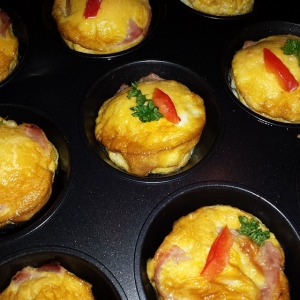 First, move beyond the idea that you can only get protein from meats. Of course, a 4 oz serving of meat a few times a day will certainly put you on the right track, but let’s look at some other ways you can incorporate protein into your diet.
First, move beyond the idea that you can only get protein from meats. Of course, a 4 oz serving of meat a few times a day will certainly put you on the right track, but let’s look at some other ways you can incorporate protein into your diet.
Befriend Protein Powder Protein powder’s convenience and low cost per serving makes it a great option to consider. You can add 1-2 scoops to your baked goods recipes or pancakes and oatmeal. Toss a scoop into your shakes. Nowadays, there are also so many flavors of protein powder to choose from so keep a variety on hand so you don’t get bored.
Eat Eggs If you’re big on salads, chop up a hardboiled egg on top for a protein punch. Hard boil a dozen for the week ahead of time and pack them for work to have as a mid-day snack. Another great option is an egg bake like a quiche or frittata. When made with cheese you’ll get even more protein per serving.
Go Nuts Start eating nuts and seeds like hemp, chia or sunflower. Nut butter spread on your favorite fruits or a stalk of celery makes a great snack.
Do Dairy Choose low or no fat versions of milk and yogurts. Non-dairy milks, such as soy, have a higher protein content than regular milk per serving. Cottage cheese and reduced fat cheeses are also a good source of protein.
Protein Snacks One of my favorite portable protein snacks is jerky. It is a meat, yet super convenient to keep in the car or throw in a bag. Another option is protein bars (homemade or store-bought) that can satisfy a sweet craving while still giving you a boost of protein.
When you think about the function of protein in the body, its role in muscle repair and growth and how it can benefit your fat loss efforts, it only makes sense to make sure you’re eating enough. Keep your palate happy by mixing up your protein intake. For all the hard work you put in at the gym, be sure to put that level and quality of work into making sure you eat enough protein.

by | Oct 2, 2014 | Building Muscle, TDEE/BMR, Troubleshooting
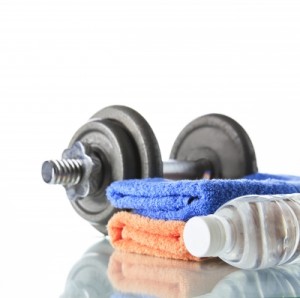 Experienced lifters know the importance of rest between sets, which can be anywhere from 30-90 seconds, depending on how quickly you recover. They also know that rest days from weight lifting — even during the week — are important, and structure their sessions so they can train one body part while the others are getting a rest. But, did you know that it is even more important to take an entire week off from strength training?
Experienced lifters know the importance of rest between sets, which can be anywhere from 30-90 seconds, depending on how quickly you recover. They also know that rest days from weight lifting — even during the week — are important, and structure their sessions so they can train one body part while the others are getting a rest. But, did you know that it is even more important to take an entire week off from strength training?
Some refer to rest weeks as de-load or recovery weeks. Whatever you prefer to call them, they are necessary. This is an opportunity to give your entire body rest from lifting heavy weights, and even from high intensity cardiovascular workouts that put a strain on the body and the mind.
Rest weeks are unfortunately over looked by many weightlifters — especially newbies — because they think the few days during the week that they rest (if they rest) is enough. They have the “no pain, no gain” mentality. They feel that the more they do, the better and stronger they will get and the quicker they will reach their goal. Actually, failing to take longer breaks will affect your progress in a negative way.
This magic of building muscle does not happen while you are actually lifting the weights. Instead, it happens while you rest. Surprised? Yes, I was too! When you lift weights to build muscle, you are tearing the small muscle fibers. Quick science lesson…After you workout, your body begins to repair damaged muscle fibers through a cellular process where it pulls the fibers together to form new muscle protein strands, or myofibrils. These repaired myofibrils increase in thickness and number to create muscle growth. Muscle growth occurs whenever the rate of muscle protein synthesis is greater than the rate of muscle protein breakdown. All of this happens while you are not working out! This machine — called the body — is truly amazing!!

I know a whole week away from the iron may put some into withdrawal! But you can make it an active rest week where you’re engaged in your favorite sport or in low intensity cardio like walking, yoga, or your favorite aerobic DVD a couple of days during the week. But, no lifting or HIIT! And, don’t forget to continue to eat balanced meals of proteins, carbohydrates, and fats. It’s important to continue to feed those muscles while they are repairing. This simply means DO NOT restrict or lower your calories because you are not working out as much! In fact, it may be a good idea to eat at your TDEE along with making good food choices during this rest period. If you are cutting during your recovery, you may want to decrease your deficit from 10% to 5%. You want to make sure any losses that week are not muscle. Remember, the whole point of recovery week is for your muscles to have a chance to repair. So, don’t plan to run a marathon during this time!!
If you’ve been lifting weights and/or doing high intensity workouts and have not taken a rest week, you are well overdue for a much needed break. It’s a good idea to plan a rest week every 4 to 5 weeks to let that muscle rest, repair, and grow. Then the weeks following your rest, you will feel refreshed, energized and ready to take your performance to the next level.
Photo credit: stockimages, naypong
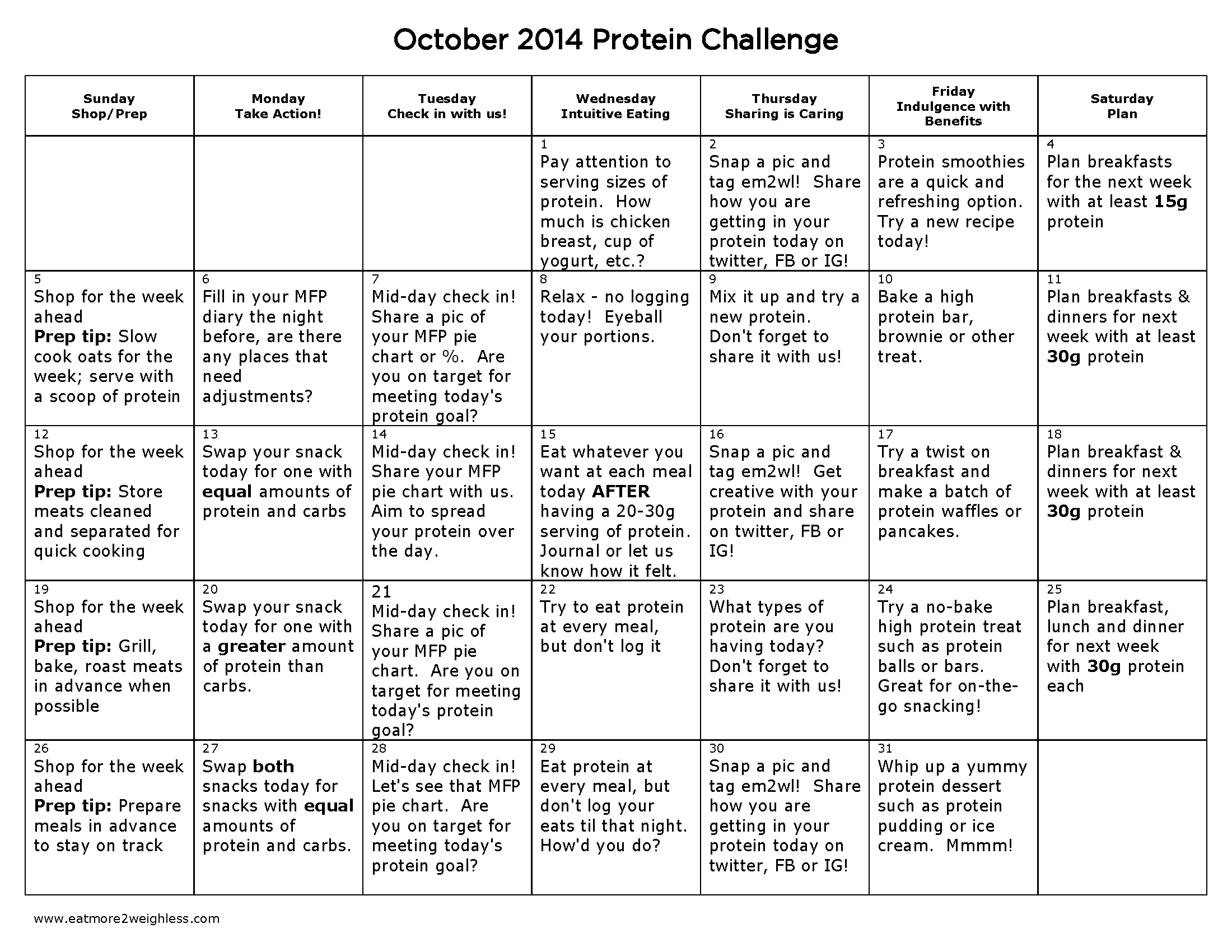
by Trish Adams | Sep 30, 2014 | Building Muscle, Life Application: Monthly Calendars
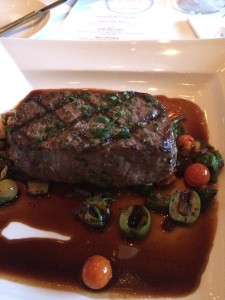 This month’s challenge focuses on meeting our protein goals. You’ve heard us harp on eating sufficient protein enough to know how we feel about it. When it comes to your fitness goals, whether that includes packing on muscle, increasing strength, power or endurance, shedding fat or maybe even a little bit of each, protein plays an important role.
This month’s challenge focuses on meeting our protein goals. You’ve heard us harp on eating sufficient protein enough to know how we feel about it. When it comes to your fitness goals, whether that includes packing on muscle, increasing strength, power or endurance, shedding fat or maybe even a little bit of each, protein plays an important role.
Including enough protein in your diet helps to maintain, build and repair muscle which is important for all goals. When you fall short your progress may also suffer. Of course all macronutrients play an important role, but it seems many struggle specifically with consuming enough protein. So, with that said, here’s what you can expect with this month’s challenge:
Plan
On your planning days you will decide what your protein sources will be for the upcoming week. Don’t worry – you won’t start off planning every meal in your day. We’ll take it slow, starting with breakfast and work our way up from there. The great thing about planning out the week is that you’ll reduce the stress of trying to figure it out as you go. Once you’ve established the habit of consuming protein with each meal, you will be able to wing it a bit more. Until then, we plan!
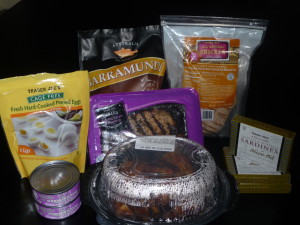
Shop & Prep
Once you have your protein sources identified, it’s time to hit the store and get stocked up. When possible make things easy by prepping your protein by either cleaning/seasoning it ahead of time or even cooking it and storing in the fridge.
Take Action
This is when the rubber meets the road by putting your plan into action! You’ll be swapping out low protein snacks with ones that offer higher protein, progressively increasing the amount as the month goes by. Set yourself up for success by completing your MFP diary the night before.
Check in with us
This is a fun one! You’ll look over your MFP chart (or Lose It! or whatever meal tracking app you use) midday to see how you’re doing, and then share it with us on one of our social media sites.* Are you on track to meet your overall protein goal for that day? Are you spreading your protein throughout the day? Very often we will leave the bulk of our protein for the end of the day. No bueno! Protein is easier for most ladies to fit in, and better absorbed by the muscles in smaller amounts of 20-30g.
Intuitive Eating
On this day you’ll relax things a bit and see how you manage without tracking. Keep calm! Take note of different serving sizes of proteins so that, in the future, you can eyeball portions. At the end of intuitive eating days evaluate how you fared. Treat these days as a learning experience, not a pass or fail!
 Sharing is Caring
Sharing is Caring
Once again you’ll check in on one of our social sites,* but this time we want to see pics of your food! We want you to move beyond chicken (although chicken is fine, too!) and be a little bit adventurous. Protein can be found in many foods other than the obvious meat, poultry and fish. Go outside your comfort zone and look to other sources such as seeds, nuts, beans and even vegetables. Let us see how you’re mixing things up, and making it work for YOUR lifestyle! The fam is all about paying it forward. Whether you’re struggling to get in the protein, or you’ve made crazy strides with your protein goals, share with the fam. You might even inspire someone or get inspired. #em2wlproteinchallenge
Indulgence with Benefits
On this day you’ll explore treats that also offer a good serving of protein. Ice cream, muffins, brownies are all on the menu! Although they offer protein they are treats so you should still enjoy them in moderation.
Remember, protein is your friend regardless of your fitness goals. It helps you to maintain or increase your muscle mass as well as provide other benefits like increased satiety and slowing the digestion of carbohydrates which helps stabilize blood sugar levels. As a general guide we recommend that 30% of your diet be from a protein source. If you’re new to all of this you may want to start with just hitting 100g/day and increasing from there. You can also evaluate your body type to help you choose a starting point.
As you can imagine trying to choke down 100g or more of protein over a couple of meals would be very hard. So aim to eat some protein with each of your meals. You will make hitting your protein goal much more attainable and will improve the absorption by your muscles. Enjoy the challenge!
*Social Sites for Sharing the challenge: (Facebook, Twitter, Instagram, Pinterest, or the Forum. Be sure to tag us on your chosen network, and hashtag #em2wlproteinchallenge so that others can get ideas!
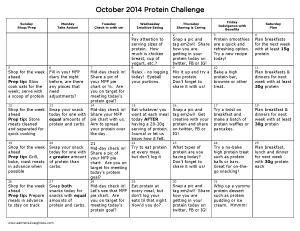
Click to enlarge
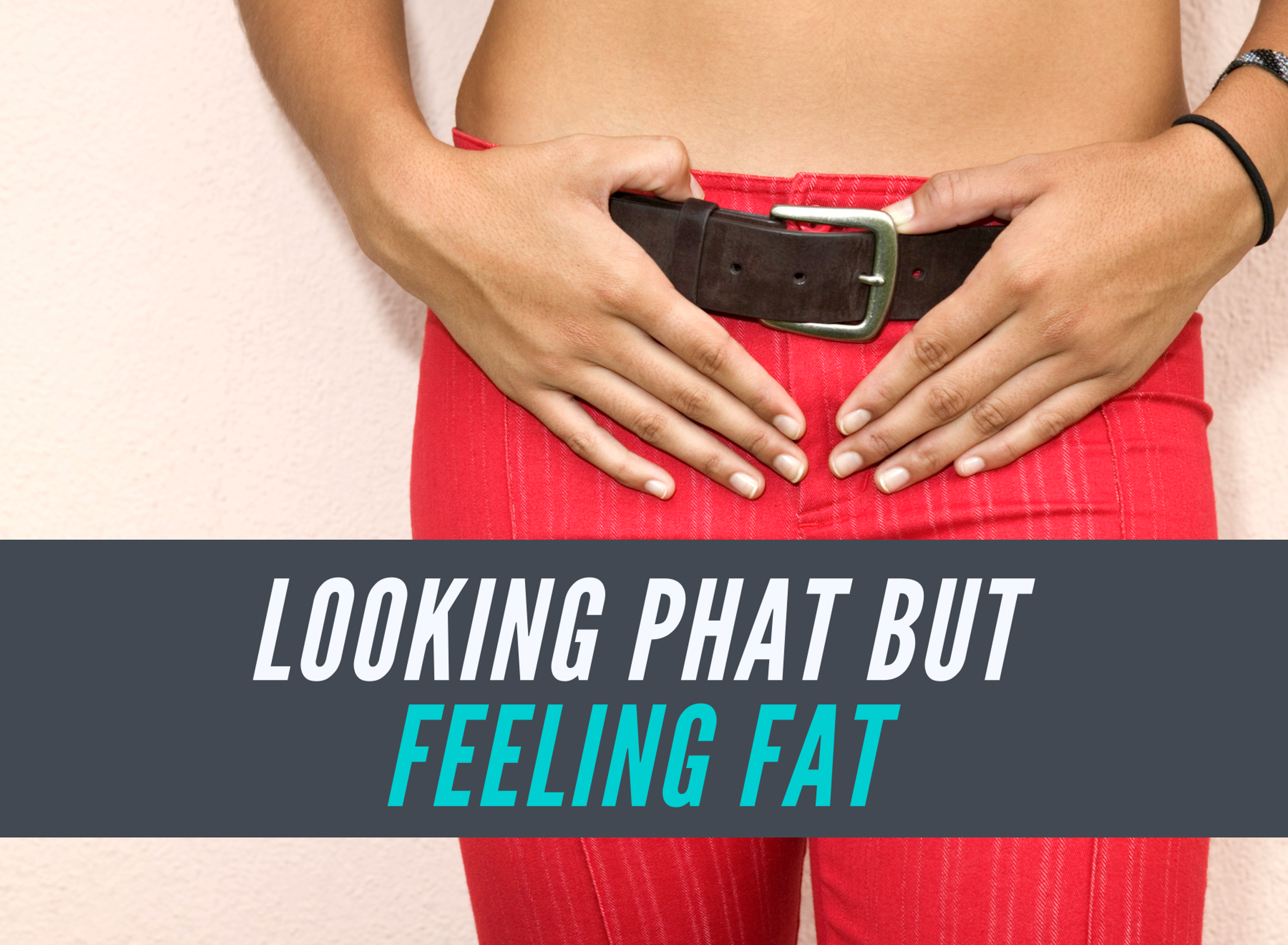
by EM2WL | Sep 24, 2014 | Building Muscle, Fat Loss / Cutting, Motivation
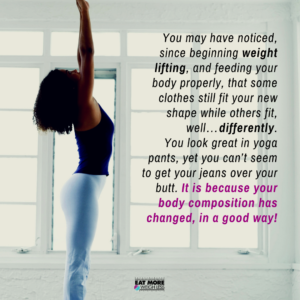 You may have noticed, since beginning weight lifting, and feeding your body properly, that some clothes still fit your new shape while others fit, well…differently. You look great in yoga pants, yet you can’t seem to get your jeans over your butt. You look great naked, but when you put on those shorts your thighs look like… “quadzilla??” Perhaps you weigh the same as you did before, or maybe you’ve gained a few extra pounds. A quick measurement check reveals that though you have lost inches in some areas, you’ve actually gained inches in others.
You may have noticed, since beginning weight lifting, and feeding your body properly, that some clothes still fit your new shape while others fit, well…differently. You look great in yoga pants, yet you can’t seem to get your jeans over your butt. You look great naked, but when you put on those shorts your thighs look like… “quadzilla??” Perhaps you weigh the same as you did before, or maybe you’ve gained a few extra pounds. A quick measurement check reveals that though you have lost inches in some areas, you’ve actually gained inches in others.
Is this supposed to be happening?
The answer is: Yes. It is because your body composition has changed, in a good way! Body composition is the proportion of fat, muscle and bone that make up the body. It is measured by the percentage of body fat and the percentage of lean body mass that you have. Resistance training along with an appropriate calorie intake, and proper macronutrients is the foundation of these amazing changes.
When I decided to make fat loss my ultimate goal — by adding resistance training to my workouts — I assumed that meant I would automatically fit into a smaller size. I slowly saw the changes to my body in the mirror and I loved what I was beginning to see. I embraced the slimming in some areas and the new curves in others. But when I went shopping for new pants, I would get discouraged. The sizes and styles that I tried on, thinking they should fit…didn’t. The smaller sizes were a little too tight in the hips, the larger sizes were too big in the waist! When I tried on shirts, some were tight around the biceps while others were tight across the back and chest.
But I didn’t give up.
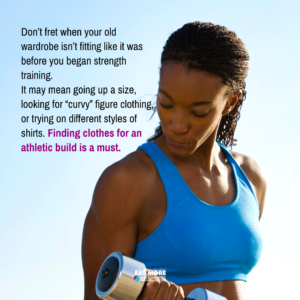 As I continued to try on different styles, sizes, and designers, I finally found a rack of designer pants that made classic, straight, and curvy fit. Yay! I chose one of each cut, in 2 different sizes. The curvy pant was made just for me. I turned from side to side admiring how awesome I looked and felt. But soon reality hit…
As I continued to try on different styles, sizes, and designers, I finally found a rack of designer pants that made classic, straight, and curvy fit. Yay! I chose one of each cut, in 2 different sizes. The curvy pant was made just for me. I turned from side to side admiring how awesome I looked and felt. But soon reality hit…
It was one size larger than what I thought I should be in. I found myself depressed over a number some guy put on a label inside a pair of pants. Shame on me!! I loved the way I looked and felt. I decided that it was time for me to ditch the number on the label in my pants like I did the scale!
So don’t fret when your old wardrobe isn’t fitting like it was before you began strength training. Look for a designer that makes clothes for your female figure. We really need to stop buying clothes made by designers who think women are shaped like 12-year-old boys. It may mean going up a size, looking for “curvy” figure clothing like I did, or trying on different styles of shirts, but finding clothes for an athletic build is a must.
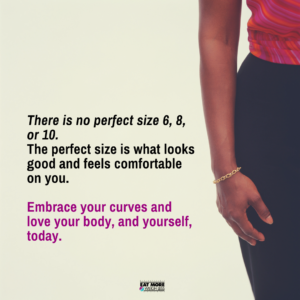 If you have been in the department stores lately you will also see beautiful long skirts and palazzo pants in gorgeous fall solid colors and prints that are perfect for figures between sizes. Many of these have elastic waistbands that will fit as you continue to lose fat, so you won’t have to buy smaller sizes! It’s important to choose clothing that not only looks fashionable, but also feels comfortable!
If you have been in the department stores lately you will also see beautiful long skirts and palazzo pants in gorgeous fall solid colors and prints that are perfect for figures between sizes. Many of these have elastic waistbands that will fit as you continue to lose fat, so you won’t have to buy smaller sizes! It’s important to choose clothing that not only looks fashionable, but also feels comfortable!
Remember, there is no perfect size 6, 8, or 10. The perfect size is what looks good and feels comfortable on you.
Embrace your new curves and love your body, and yourself, today.

 Kiki has been bugging me for a while now to write about my weight loss and fitness journey, so here I am finally getting the courage up to writing it. I say courage because in the past year I have come to realize quite a few things about myself that I was ashamed about for a long time and have finally come to be able to face the truth. Yes, I too (as many women do), suffer from binge eating disorder (BED), but let me start at the beginning of my journey, because I couldn’t always admit, or understood that this was going on.
Kiki has been bugging me for a while now to write about my weight loss and fitness journey, so here I am finally getting the courage up to writing it. I say courage because in the past year I have come to realize quite a few things about myself that I was ashamed about for a long time and have finally come to be able to face the truth. Yes, I too (as many women do), suffer from binge eating disorder (BED), but let me start at the beginning of my journey, because I couldn’t always admit, or understood that this was going on. After about a year of weight watchers, I decided not to renew my contract and to switch over to MFP, where I discovered that there was a whole group of Cathe Friedrich obsessed women out there. For those of you unfamiliar with Cathe, she is a workout DVD genius and my guru! I had been lifting weights with her DVD’s along with her cardio DVD’s during the whole weight watchers process. It was a breath of fresh air to meet all of these women with the same workout commitment that I had. Well, long story short, I got hooked up with Kiki through other mutual Cathe/MFP ladies and started to read her blog posts and watched her YouTube videos. This is where I first got hooked up with EM2WL and started to realize that the health industry has steered us women in the wrong direction when it comes to “losing” weight.
After about a year of weight watchers, I decided not to renew my contract and to switch over to MFP, where I discovered that there was a whole group of Cathe Friedrich obsessed women out there. For those of you unfamiliar with Cathe, she is a workout DVD genius and my guru! I had been lifting weights with her DVD’s along with her cardio DVD’s during the whole weight watchers process. It was a breath of fresh air to meet all of these women with the same workout commitment that I had. Well, long story short, I got hooked up with Kiki through other mutual Cathe/MFP ladies and started to read her blog posts and watched her YouTube videos. This is where I first got hooked up with EM2WL and started to realize that the health industry has steered us women in the wrong direction when it comes to “losing” weight. I should mention, that after I lost all the weight with weight watchers, I told my husband that I thought I wanted to someday compete in a figure competition. I had an unwritten goal of competing before I was 45. Well, I talked about this goal for about 4 years and finally, a (very devout Christian) friend of mine finally pointed out that maybe the fact that I kept bringing this topic up every few months, that maybe, just maybe God was directing me to actually go for my goal. I should mention that within all this time of weight loss and resets, I was born again (which is why she felt it was God calling me to this goal, for whatever reason). We both figured the reason was not because he wanted me to compete, but one much more deeply.
I should mention, that after I lost all the weight with weight watchers, I told my husband that I thought I wanted to someday compete in a figure competition. I had an unwritten goal of competing before I was 45. Well, I talked about this goal for about 4 years and finally, a (very devout Christian) friend of mine finally pointed out that maybe the fact that I kept bringing this topic up every few months, that maybe, just maybe God was directing me to actually go for my goal. I should mention that within all this time of weight loss and resets, I was born again (which is why she felt it was God calling me to this goal, for whatever reason). We both figured the reason was not because he wanted me to compete, but one much more deeply. So, the reason I didn’t compete? Twelve weeks out from the competition date, when true contest prep would normally take place, I got a response from my trainer that I was not expecting. She felt that with my BED issues, that she could not get me to competition readiness without restricting my calories too much and with my ED, she knew it was the wrong thing to do. After much discussion with my husband, we both agreed that this is why I hired her and I should heed her advice.
So, the reason I didn’t compete? Twelve weeks out from the competition date, when true contest prep would normally take place, I got a response from my trainer that I was not expecting. She felt that with my BED issues, that she could not get me to competition readiness without restricting my calories too much and with my ED, she knew it was the wrong thing to do. After much discussion with my husband, we both agreed that this is why I hired her and I should heed her advice.



















 You may have noticed, since beginning weight lifting, and feeding your body properly, that some clothes still fit your new shape while others fit, well…differently. You look great in yoga pants, yet you can’t seem to get your jeans over your butt. You look great naked, but when you put on those shorts your thighs look like… “quadzilla??” Perhaps you weigh the same as you did before, or maybe you’ve gained a few extra pounds. A quick measurement check reveals that though you have lost inches in some areas, you’ve actually gained inches in others.
You may have noticed, since beginning weight lifting, and feeding your body properly, that some clothes still fit your new shape while others fit, well…differently. You look great in yoga pants, yet you can’t seem to get your jeans over your butt. You look great naked, but when you put on those shorts your thighs look like… “quadzilla??” Perhaps you weigh the same as you did before, or maybe you’ve gained a few extra pounds. A quick measurement check reveals that though you have lost inches in some areas, you’ve actually gained inches in others. As I continued to try on different styles, sizes, and designers, I finally found a rack of designer pants that made classic, straight, and curvy fit. Yay! I chose one of each cut, in 2 different sizes. The curvy pant was made just for me. I turned from side to side admiring how awesome I looked and felt. But soon reality hit…
As I continued to try on different styles, sizes, and designers, I finally found a rack of designer pants that made classic, straight, and curvy fit. Yay! I chose one of each cut, in 2 different sizes. The curvy pant was made just for me. I turned from side to side admiring how awesome I looked and felt. But soon reality hit… If you have been in the department stores lately you will also see beautiful long skirts and palazzo pants in gorgeous fall solid colors and prints that are perfect for figures between sizes. Many of these have elastic waistbands that will fit as you continue to lose fat, so you won’t have to buy smaller sizes! It’s important to choose clothing that not only looks fashionable, but also feels comfortable!
If you have been in the department stores lately you will also see beautiful long skirts and palazzo pants in gorgeous fall solid colors and prints that are perfect for figures between sizes. Many of these have elastic waistbands that will fit as you continue to lose fat, so you won’t have to buy smaller sizes! It’s important to choose clothing that not only looks fashionable, but also feels comfortable!
Recent Comments